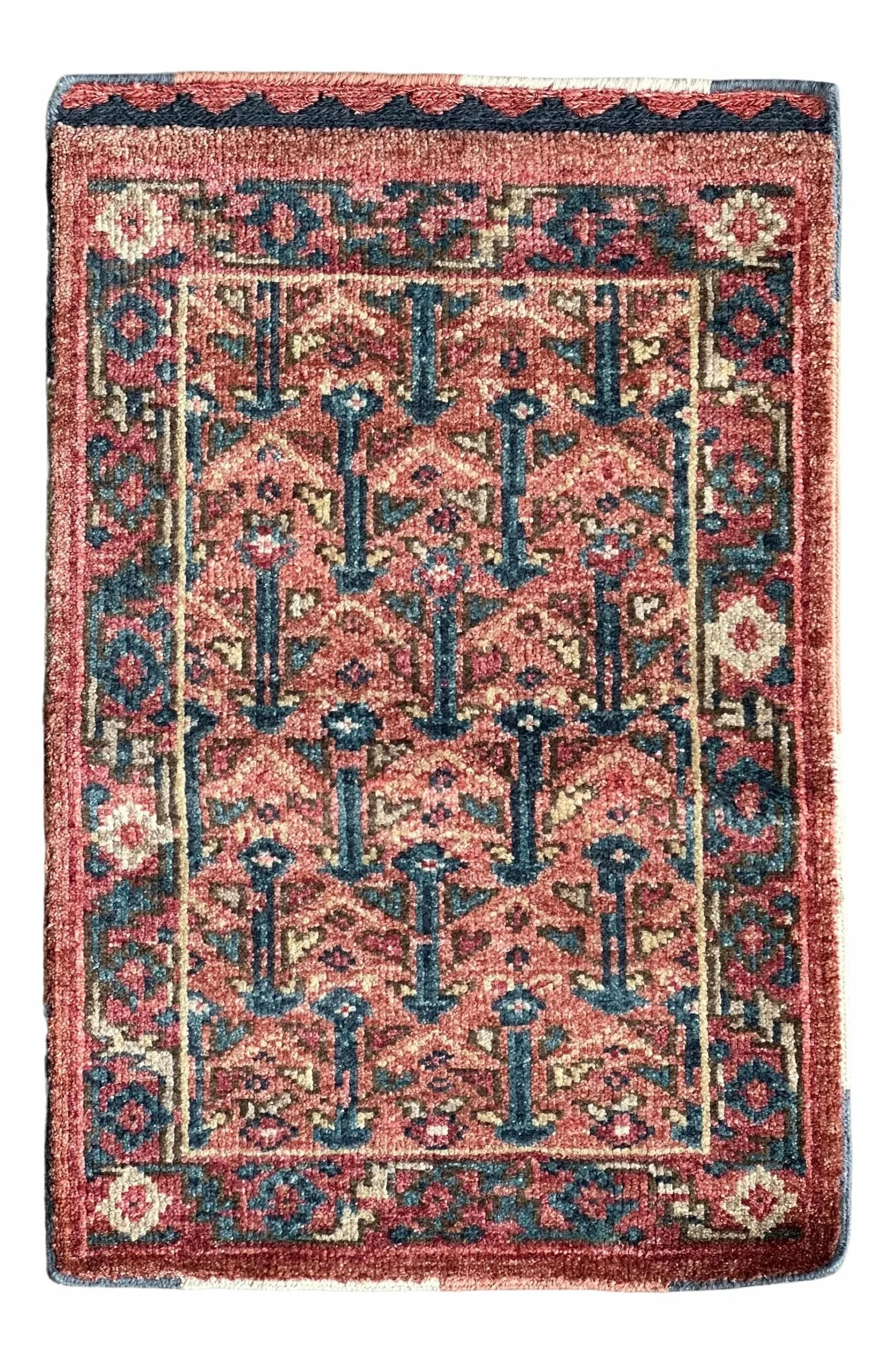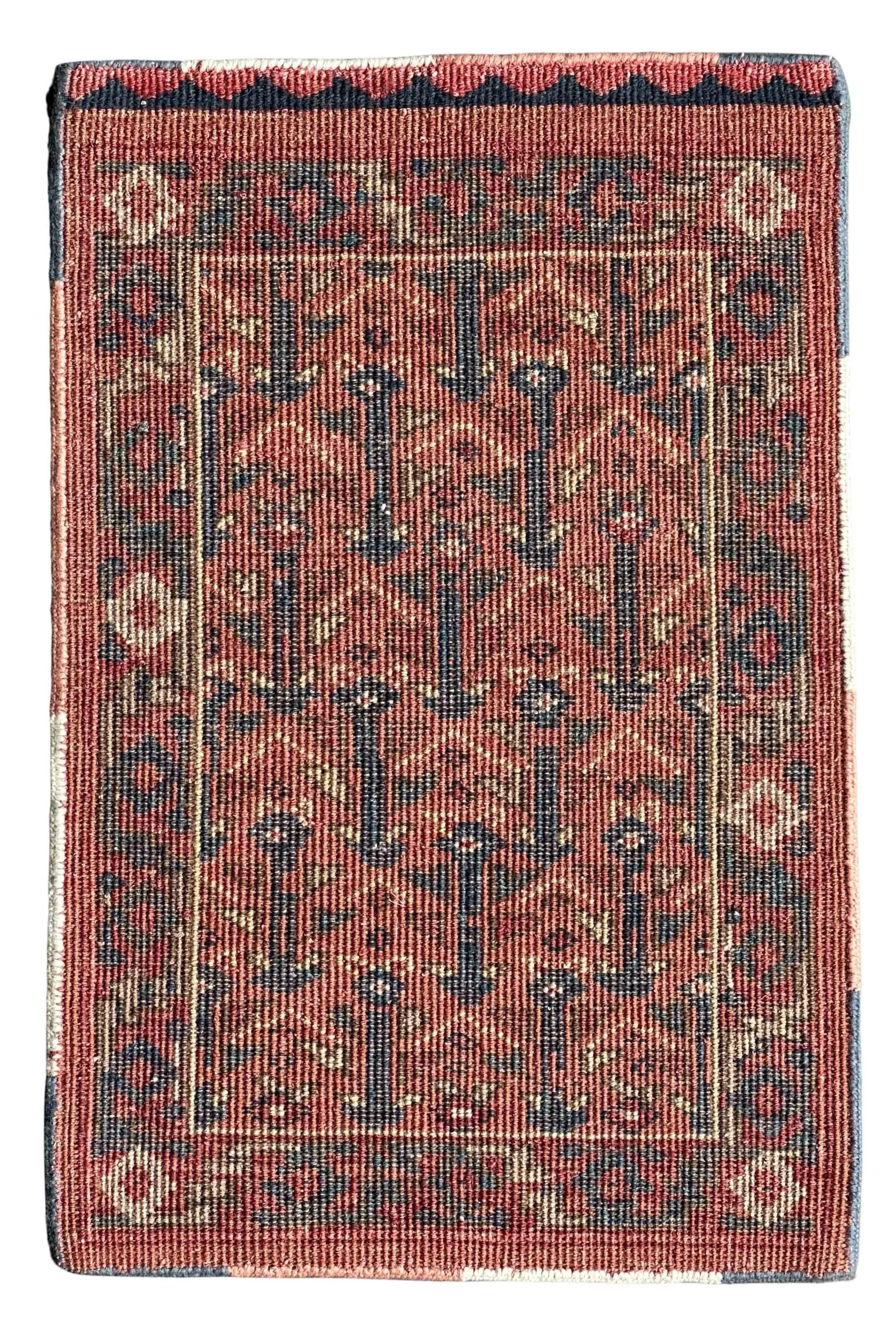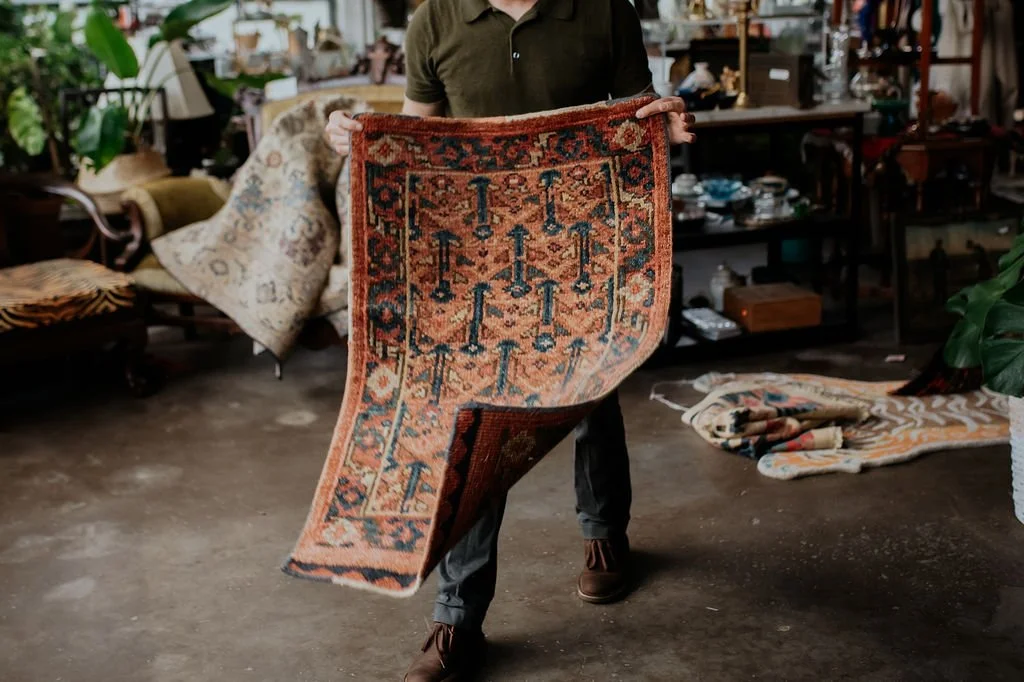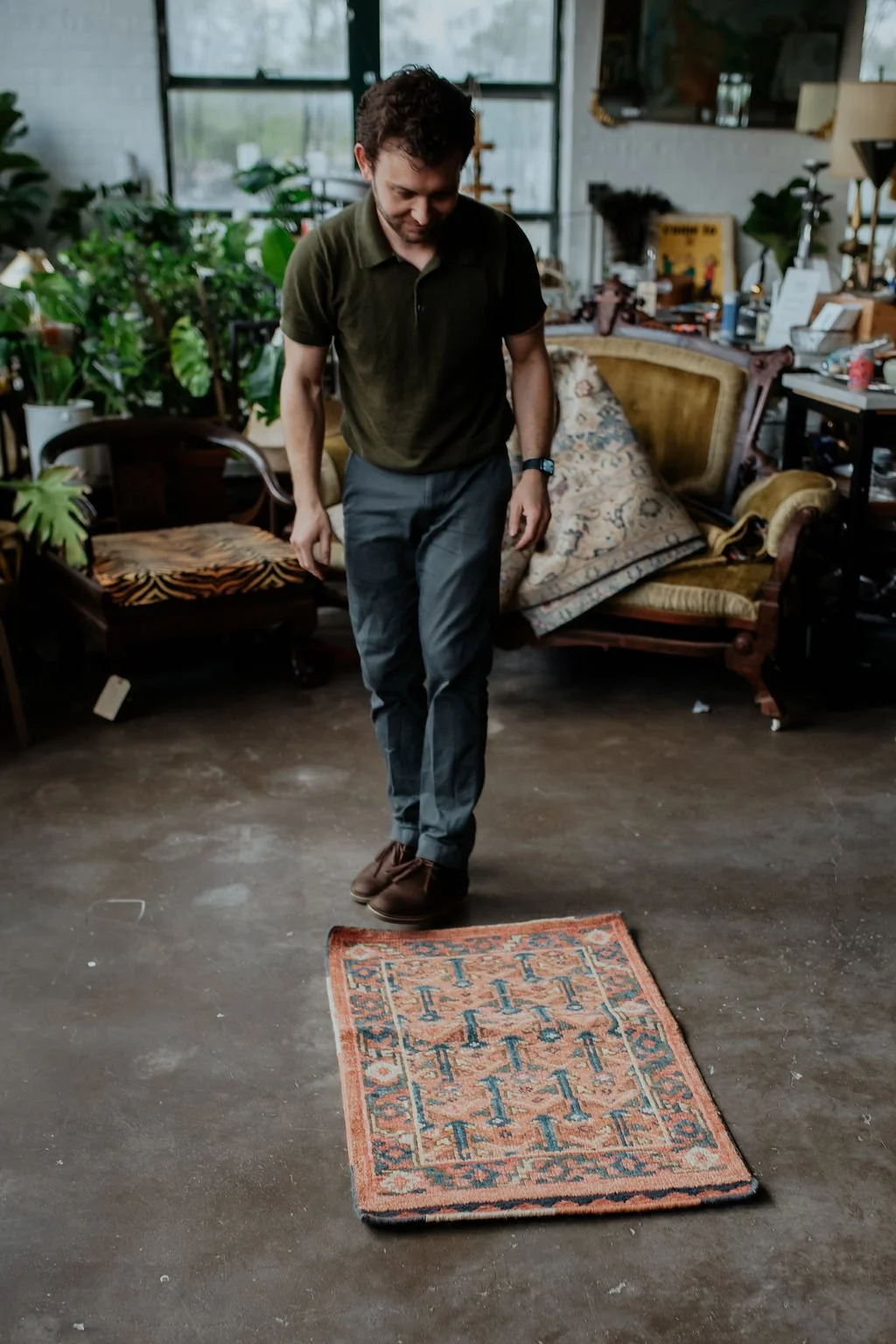 Image 1 of 4
Image 1 of 4

 Image 2 of 4
Image 2 of 4

 Image 3 of 4
Image 3 of 4

 Image 4 of 4
Image 4 of 4





Sebastian | 2' x 3'
Materials: 100% vegetable dyed wool on a cotton or wool foundation
Construction: Hand-knotted, fringes bound in an overcast stitch
Origin: Tribal; West Persian; likely Enjelas
Pile: Medium
Date: 1960-70
Wear: Very little wear
Design: Repeating arrow/tree motifs
Notes: Intended for personal use, not export. Particularly notable are the two ends of the rug where one would expect to see fringe. In this case, the lack of fringe is intentional: the fringe has been trimmed short and the rug edges have been bound with an overcast stitch, similar to what one usually sees on the sides of a woven rug. While sometimes done as a repair to wearing fringe, in this case it appears that the original rugmaker, expecting heavy use for this rug, preemptively bound the fringes before use to prevent wear and to prevent the fringes getting dirtied if the rug was used in an outdoor environment. The directionality of the arrow/tree design is often seen in prayer rugs, though the relatively small size makes that use unlikely for this rug; the bound fringe indicates that this rug was likely intended for use at a threshold of a home or tent, where dirt or sand would, without otherwise dirty the fringe. The small size of the rug echoes this likely use, as a small rug like this can be cleaned and dried quickly.
Materials: 100% vegetable dyed wool on a cotton or wool foundation
Construction: Hand-knotted, fringes bound in an overcast stitch
Origin: Tribal; West Persian; likely Enjelas
Pile: Medium
Date: 1960-70
Wear: Very little wear
Design: Repeating arrow/tree motifs
Notes: Intended for personal use, not export. Particularly notable are the two ends of the rug where one would expect to see fringe. In this case, the lack of fringe is intentional: the fringe has been trimmed short and the rug edges have been bound with an overcast stitch, similar to what one usually sees on the sides of a woven rug. While sometimes done as a repair to wearing fringe, in this case it appears that the original rugmaker, expecting heavy use for this rug, preemptively bound the fringes before use to prevent wear and to prevent the fringes getting dirtied if the rug was used in an outdoor environment. The directionality of the arrow/tree design is often seen in prayer rugs, though the relatively small size makes that use unlikely for this rug; the bound fringe indicates that this rug was likely intended for use at a threshold of a home or tent, where dirt or sand would, without otherwise dirty the fringe. The small size of the rug echoes this likely use, as a small rug like this can be cleaned and dried quickly.